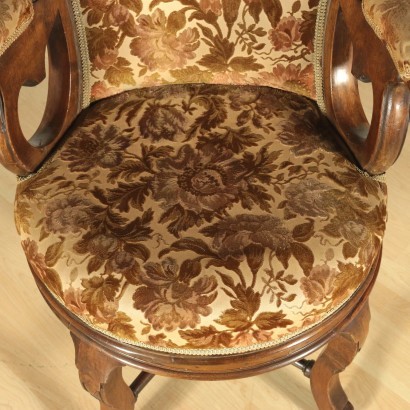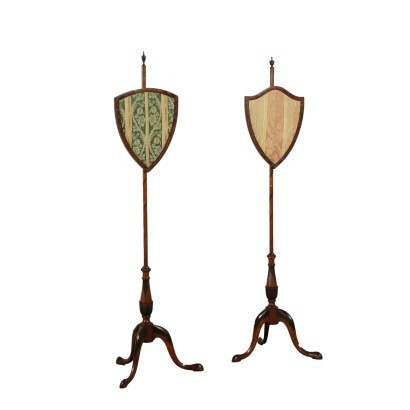Luigi Filippo Swivel Armchair
Features
Style: Louis Philippe (1830-1848)
Age: 19th Century / 1801 - 1900
Origin: Italy
Main essence: Walnut
Material: Padded
Description
Luigi Filippo swivel armchair, supported by four moved and carved legs, connected by turned "X" crosspieces. The circular seat is padded, as is the backrest, from the sides of which drop-shaped and curled uprights branch off and act as armrests. Walnut wood.
Product Condition:
Product in fair condition showing some signs of wear.
Dimensions (cm):
Height: 95,5
Width: 65
Depth: 70
Seat height: 48
Additional Information
Style: Louis Philippe (1830-1848)
The Louis Philippe style developed in a context characterized by two main factors: the expansion of the bourgeoisie and the advent of the industrialization of production processes.
This style therefore faces the decline of artisans and the new needs for economy and comfort.
Aesthetically, it takes elements from the past, especially from the Gothic and Renaissance, preferring very curved shapes for the backrests of the seats, roe deer legs and feet, with a very rich decoration.
It mainly uses dark woods: ebony, rosewood and mahogany, combined for contrast with light elements.
Find out more with our insights:
The Louis Philippe style
Classic Monday: Louis Philippe and Umbertina consoles compared
The Austrian taste of Baroque
History of Louis Philippe furniture
The Umbertino style
Antiques in Lombardy
The Evolution of the Empire Style
























